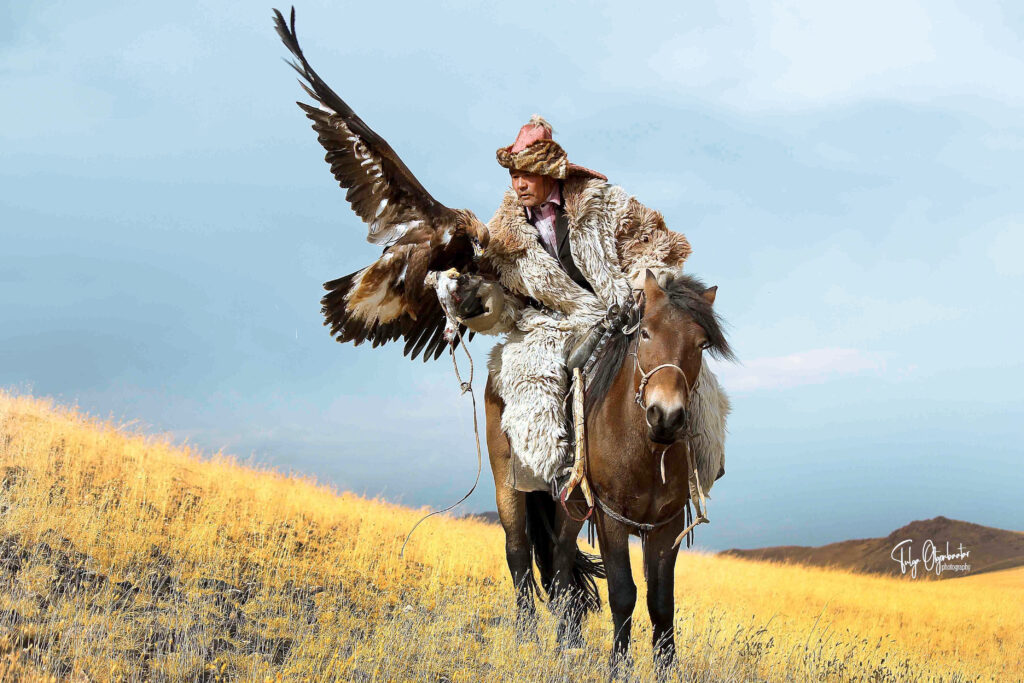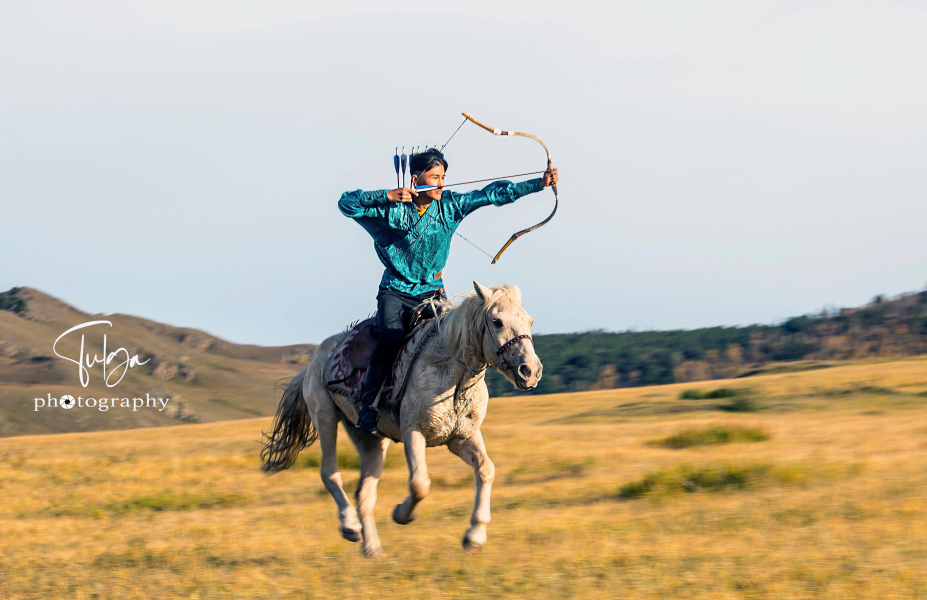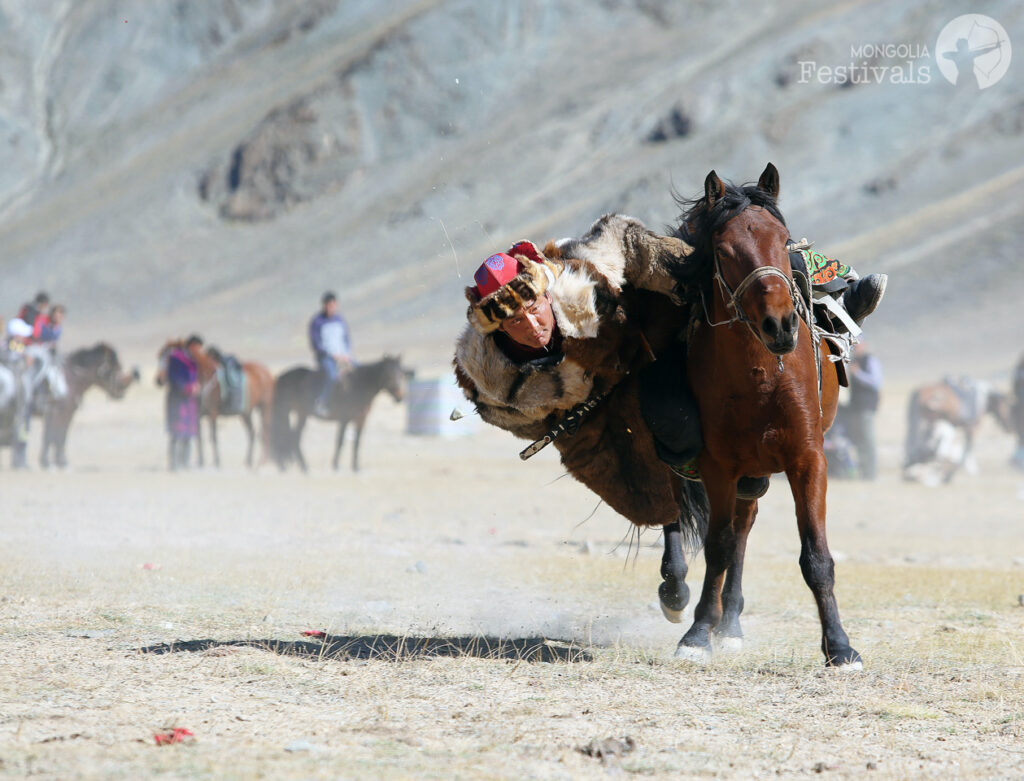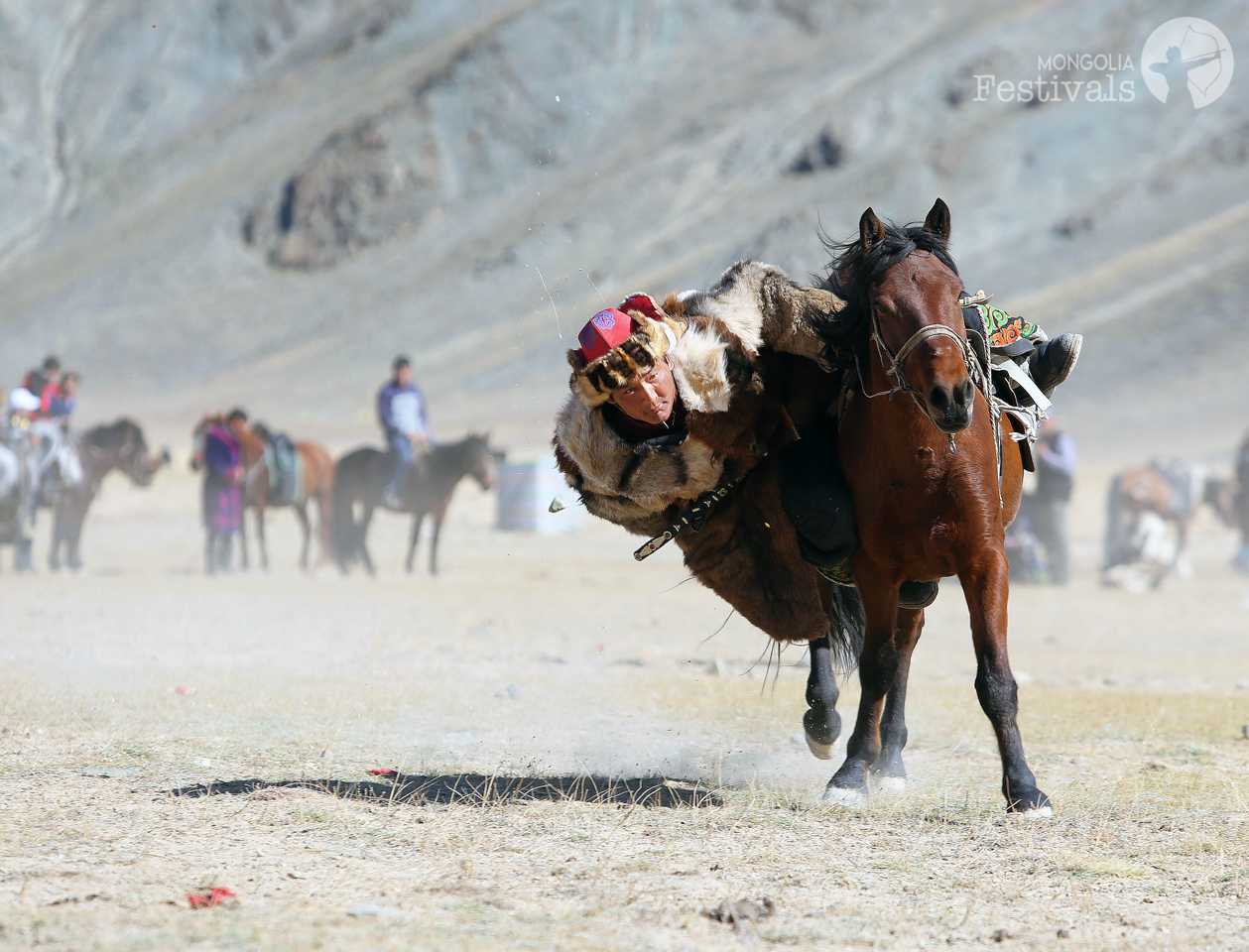The World Nomad Games is an international cultural and sporting event that celebrates the traditional sports, lifestyles, and heritage of nomadic peoples from around the world. First held in 2014 in Kyrgyzstan, the games feature competitions such as horseback archery, wrestling, eagle hunting, and the dramatic equestrian sport kok-boru (a form of polo played with a goat carcass).
World Nomad Games vs Naadam Festival
| Aspect | World Nomad Games | Naadam Festival |
|---|---|---|
| Origin | Founded in 2014 by the government of Kyrgyzstan. | Dates back to Mongolia’s ancient history, officially recognized as the national festival of Mongolia. |
| Purpose | To preserve and promote nomadic culture globally, bringing together participants from many countries. | To celebrate Mongolian independence, heritage, and the “Three Manly Games” (wrestling, horse racing, archery). |
| Scope | International — participants from over 100 countries showcasing diverse nomadic traditions. | National, though it attracts international visitors; focuses mainly on Mongolian traditions. |
| Main Sports | Horseback archery, eagle hunting, kok-boru (goat polo), traditional wrestling, and many others from across nomadic nations. | Mongolian wrestling, long-distance horse racing, and archery — known as the “Three Manly Games.” |
| Cultural Events | Folk music, crafts, cuisine, traditional clothing, and ethnocultural exhibitions from many nomadic peoples. | Parades, music, dance, and celebrations of Mongolian history and national pride. |
| Frequency & Location | Held every two years in different host countries (Kyrgyzstan, Turkey, Kazakhstan, etc.). | Held annually in July in Ulaanbaatar, Mongolia and across the country. |
| Symbolism | Represents unity of the world’s nomadic nations and preservation of their shared heritage. | Symbolizes Mongolian identity, independence, and continuity of its ancient traditions. |
The World Nomad Games and the Naadam Festival both celebrate nomadic culture but differ in scope and origin. The World Nomad Games, founded in 2014 in Kyrgyzstan, is an international event that brings together participants from around the world to showcase traditional nomadic sports and lifestyles, such as horseback archery and eagle hunting.
In contrast, Mongolia’s Naadam Festival is a national celebration with ancient roots, centered on the “Three Manly Games” — wrestling, horse racing, and archery — symbolizing Mongolian heritage and pride. While Naadam highlights Mongolia’s national identity, the World Nomad Games promote the unity and diversity of nomadic cultures globally.
Games Played in the World Nomad Games

The World Nomad Games celebrate the ancient traditions and athletic spirit of nomadic peoples from around the world, silk road, etc. These games feature a wide range of traditional sports that reflect the skills needed for life on the open steppe — strength, speed, precision, and harmony with nature.
Equestrian Sports
Equestrian sports are among the most exciting and symbolic events of the World Nomad Games, reflecting the deep connection between nomadic peoples and their horses. For centuries, horses have been central to nomadic life — used for travel, herding, hunting, and warfare. These competitions showcase the strength, skill, and partnership between rider and horse, capturing the true spirit of the steppe.
1. Kok-boru (Buzkashi)
One of the most thrilling and well-known games, Kok-boru is a team sport similar to polo but played with a goat carcass instead of a ball. Riders compete to grab the carcass, race across the field, and score by placing it into the opponent’s goal. It demonstrates teamwork, courage, and exceptional riding skill.
2. Er enish (Horseback Wrestling)
In Er enish, two riders wrestle each other while on horseback, trying to unseat their opponent. It requires great strength, balance, and coordination between the rider and horse.
3. At chabysh (Long-Distance Horse Racing)
This is a traditional endurance race, often covering many kilometers across open steppe or mountain terrain. It tests the stamina of both horse and rider, reflecting the endurance needed in nomadic life.
4. Jorgo salysh (Pacer Race)
A speed event where horses compete using a specific pacing gait rather than a gallop. It highlights the horse’s smooth movement and the rider’s control.
5. Mounted Archery
In this event, archers shoot arrows at targets while galloping at full speed. It’s a dramatic showcase of accuracy, timing, and horsemanship, echoing the skills ancient nomadic warriors used in battle.
Wrestling Games
Wrestling is one of the most important and traditional events in the World Nomad Games, representing strength, courage, and respect — core values of nomadic culture. Across Central Asia and Mongolia, wrestling has been a symbol of manhood and a way to prepare warriors for life on the steppe.
The Games feature several traditional styles of wrestling from different nomadic nations:
1. Alysh (Kyrgyz Belt Wrestling)
In Alysh, wrestlers wear special belts and grip each other’s belts to throw their opponent onto the ground. It’s a test of balance, power, and technique.
2. Kazakh Kuresi (Kazakh Wrestling)
A popular style from Kazakhstan, Kuresi allows wrestlers to use their arms and legs to unbalance and throw their opponents. Matches are fast-paced and demand both strength and strategy.
3. Mongol Bökh (Mongolian Wrestling)
A traditional Mongolian wrestling form with no weight classes. Wrestlers wear distinctive open vests and perform the “eagle dance” before and after matches. Victory is achieved when one competitor forces the other to touch the ground with any part of the body except the feet.
4. Goresh (Tatar and Bashkir Wrestling)
A belt-wrestling style popular among Turkic peoples, focusing on skillful throws and technique rather than pure strength.
5. Kurash (Uzbek Wrestling)
In Kurash, wrestlers wear jackets and belts, aiming to throw their opponent flat on their back for an immediate win.
Archery and marksmanship are among the most ancient and respected traditions of nomadic life, deeply tied to hunting and warfare. At the World Nomad Games, these events highlight the precision, concentration, and skill that nomadic peoples have developed over centuries of living in harmony with nature.
Archery & Marksmanship
Archery and marksmanship are among the most ancient and respected traditions of nomadic life, deeply tied to hunting and warfare. At the World Nomad Games, these events highlight the precision, concentration, and skill that nomadic peoples have developed over centuries of living in harmony with nature.
1. Traditional Archery
Competitors use handcrafted bows and arrows, often modeled after ancient designs from Turkic, Mongolian, and Central Asian cultures. Participants wear traditional clothing, and each nation follows its own shooting techniques and styles. The goal is to hit targets placed at varying distances, demonstrating accuracy, strength, and control.
2. Mounted Archery
One of the most spectacular events, mounted archery involves shooting arrows at targets while galloping on horseback. This discipline requires exceptional timing and coordination between rider and horse — a skill once essential for nomadic warriors who hunted and fought from horseback.
3. Crossbow and Long-Distance Shooting
In some editions of the Games, athletes also compete in crossbow or long-distance marksmanship events, testing their precision and endurance in outdoor settings similar to the open steppes where nomads lived.
Hunting Games
Hunting games are among the most fascinating and culturally rich events in the World Nomad Games, showcasing the ancient bond between humans, animals, and nature. For centuries, nomadic peoples relied on their hunting skills not only for survival but also as a symbol of bravery, intelligence, and respect for the natural world. These competitions bring those age-old traditions back to life.
1. Salbuurun
Salbuurun is a combined hunting contest that includes several disciplines such as eagle hunting, hound racing, and archery. It represents the complete skill set of a traditional nomadic hunter — speed, accuracy, and harmony with animals.
2. Eagle Hunting (Berkutchi)
In this breathtaking event, hunters known as berkutchi use trained golden eagles to catch prey like hares or foxes. The partnership between hunter and bird is built over years of trust and training. This tradition, especially strong in Kyrgyzstan and Kazakhstan, reflects the deep respect nomads have for nature and their hunting companions.
3. Taigan Racing
This event features the Taigan, a native Kyrgyz sighthound breed known for its speed and sharp instincts. The dogs race across open terrain, demonstrating their agility and hunting abilities, while also honoring the ancient role of dogs in nomadic hunting life.
Intellectual Games & Ethno Games
The Intellectual and Ethno Games highlight the strategic and creative side of nomadic culture. While much of nomadic life was centered on physical strength and survival, mental agility and wisdom were equally valued. These games reflect the intelligence, logic, and tactical thinking that helped nomads thrive in challenging environments.
1. Toguz Korgool (Nine Pebbles)
Toguz Korgool, also known as Toguz Kumalak or Mangala in other cultures, is a traditional board game played with small stones or seeds placed in pits on a wooden board. The goal is to collect more stones than the opponent through strategic moves and calculations. It is similar to the African mancala games and is often considered a “battle of minds” in nomadic culture.
2. Ordo
Ordo is a Kyrgyz traditional game that simulates an ancient battlefield strategy. Players use stones or sheep bones arranged in a circle to represent warriors or camps. The aim is to strike the opponent’s “khan” (leader piece) while protecting one’s own, symbolizing leadership and tactical skill.
3. Asyk (Knucklebone Games)
Asyk is played using the ankle bones of sheep or goats. It can be both a physical and strategic game, involving flicking or tossing the bones to hit targets. It was a common pastime among nomadic children and also served to improve coordination and focus.
Origins & History of World Nomad Games

The World Nomad Games were created to preserve, promote, and celebrate the ancient traditions of nomadic cultures from around the world. The idea originated in Kyrgyzstan, where nomadic heritage remains a strong part of national identity. The first Games were held in 2014 near Lake Issyk-Kul, Kyrgyzstan.
The main purpose behind starting the Games was to protect disappearing traditions — such as horseback sports, eagle hunting, wrestling, and traditional music — that were at risk of being forgotten in the modern world. Organizers wanted to create an international platform where nomadic peoples could share their customs, sports, and values, strengthening cultural ties across nations.
Another reason was to unite different nomadic nations — from Central Asia, the Caucasus, Mongolia, Turkey, and beyond — under one event that celebrates their shared history and spirit of freedom, endurance, and harmony with nature.
Beyond culture, the Games also aim to promote tourism, friendship, and peace by showing the world the beauty and wisdom of nomadic life.
| Year | Host Country | Host City / Location | Key Highlights |
|---|---|---|---|
| 2014 | 🇰🇬 Kyrgyzstan | Cholpon-Ata, Lake Issyk-Kul | The 1st World Nomad Games; launched to preserve nomadic culture. 19 countries participated. |
| 2016 | 🇰🇬 Kyrgyzstan | Cholpon-Ata, Lake Issyk-Kul | Participation grew to 60+ countries; introduced more traditional sports. |
| 2018 | 🇰🇬 Kyrgyzstan | Cholpon-Ata, Lake Issyk-Kul | The largest edition in Kyrgyzstan with over 80 nations joining. |
| 2022 | 🇹🇷 Turkey | İznik, Bursa Province | First Games held outside Kyrgyzstan; featured new sports and strong cultural exchange. |
| 2024 | 🇰🇿 Kazakhstan | Astana | 5th Games; 2,400+ athletes from 89 countries. Kazakhstan topped the medal table. |
| 2026 (Upcoming) | 🇰🇬 Kyrgyzstan | Bishkek & Lake Issyk-Kul | Scheduled for Aug 31 – Sept 6, 2026; the Games return home to Kyrgyzstan. |
Cultural Programs and Exhibitions of World Nomad Games

Beyond the thrilling sports competitions, the World Nomad Games also celebrate the rich cultural traditions of nomadic peoples through various programs and exhibitions. These events transform the Games into a living festival of heritage, where visitors can experience the art, music, and daily life of ancient steppe civilizations.
Colorful ethno-villages are set up to represent different countries and cultures, featuring traditional yurts, handicrafts, folk music, dance performances, and cuisine. Artisans demonstrate ancient skills such as felt-making, embroidery, metalwork, and horse gear crafting, allowing guests to see how nomadic communities expressed creativity through practical design.
Cultural exhibitions also include storytelling, theater, and national costume shows, showcasing the diversity and beauty of nomadic traditions. These programs emphasize the importance of cultural exchange, friendship, and respect for heritage, turning the Games into more than a sporting event — a global celebration of the nomadic spirit and way of life.
Participation & International Reach
Since their inception, the World Nomad Games have grown from a regional celebration in Kyrgyzstan to a global cultural and sporting event. The first Games in 2014 featured athletes from only 19 countries, but participation has steadily increased with each edition — reaching nearly 90 nations by 2024.
Countries from Central Asia, the Caucasus, the Middle East, Eastern Europe, and even the Americas now take part, reflecting the universal appeal of nomadic traditions. Participants include professional athletes, traditional masters, and cultural performers, all united by a shared respect for ancestral heritage and the values of courage, endurance, and harmony with nature.
This growing international reach has turned the World Nomad Games into a symbol of cultural diplomacy. It provides a platform for nations to strengthen ties through sports and shared traditions rather than competition alone. As a result, the Games have become a beacon of cross-cultural understanding, inspiring global audiences to appreciate the beauty and wisdom of nomadic life.
Frequently Asked Questions (FAQ)
1. What are the World Nomad Games?
The World Nomad Games are an international cultural and sporting event that celebrates the traditional sports, lifestyles, and heritage of nomadic peoples from around the world. They include competitions like horseback archery, kok-boru, eagle hunting, wrestling, and traditional board games.
2. When did the World Nomad Games start?
The Games were first held in 2014 in Cholpon-Ata, Kyrgyzstan, with the goal of preserving and promoting the traditions of nomadic cultures.
3. How often are the World Nomad Games held?
They are held every two years (biennially), although some editions have been postponed or rescheduled due to global events like the COVID-19 pandemic.
4. Which countries have hosted the Games?
So far, the Games have been hosted by Kyrgyzstan (2014, 2016, 2018), Turkey (2022), and Kazakhstan (2024). The next edition will return to Kyrgyzstan in 2026.
5. What sports are played in the World Nomad Games?
The Games feature a wide variety of traditional sports, including kok-boru (goat polo), er enish (horseback wrestling), archery, kurash and alysh wrestling, eagle hunting, taigan racing, and intellectual games such as Toguz Korgool.
6. What is the purpose of the World Nomad Games?
Their main purpose is to preserve disappearing nomadic traditions, unite different cultures, and promote peace and friendship through shared heritage.
7. How many countries participate in the Games?
Participation has grown from 19 countries in 2014 to nearly 90 countries by 2024, making it a truly international celebration.
8. What makes the World Nomad Games different from the Naadam Festival?
The Naadam Festival is Mongolia’s national celebration focused on the “Three Manly Games” — wrestling, horse racing, and archery. The World Nomad Games, on the other hand, are international, featuring a wider range of nomadic sports and cultural traditions from around the world.
9. When and where will the next World Nomad Games be held?
The next Games are scheduled for August 31 – September 6, 2026, in Bishkek and Lake Issyk-Kul, Kyrgyzstan.

